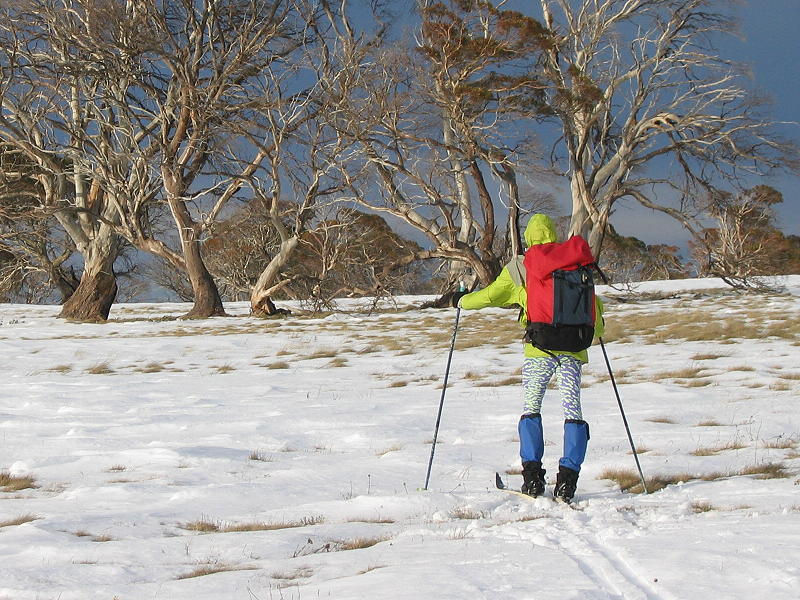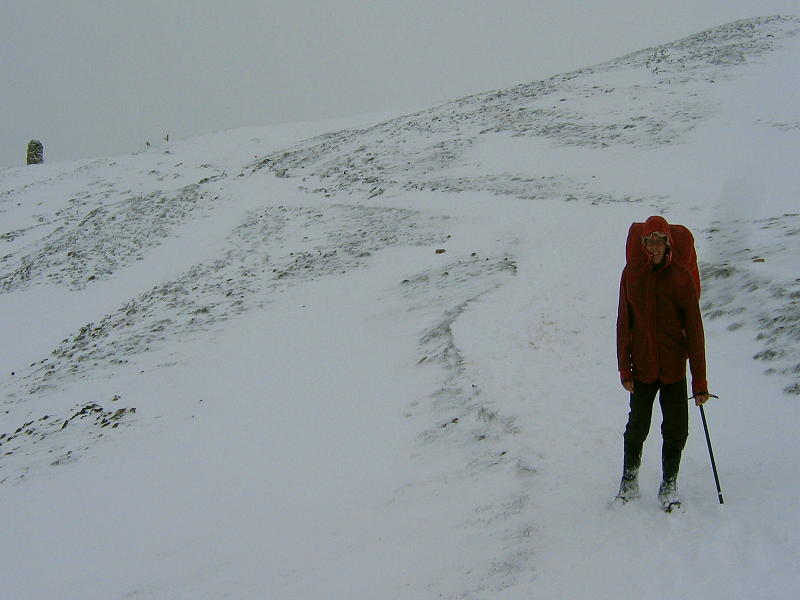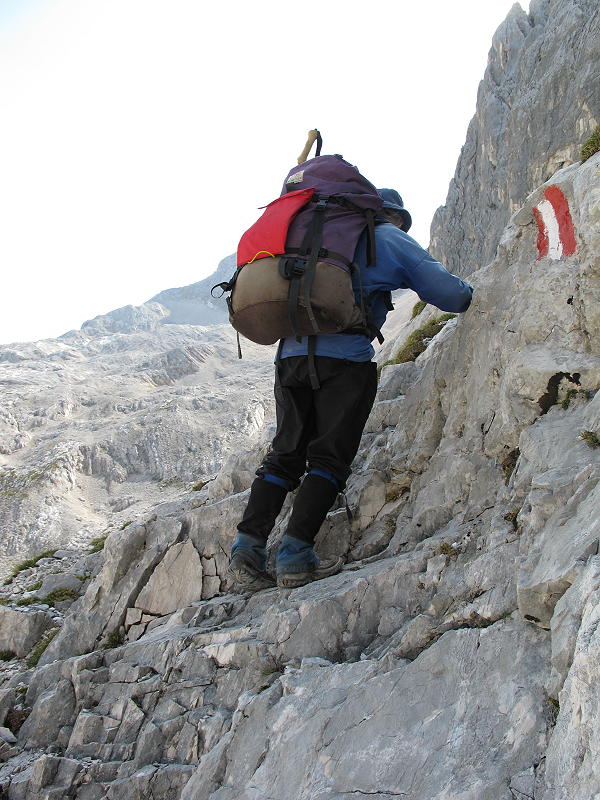Topic
DWR, Wetting out and WPB breathability/moisture vapor transfer rate
Forum Posting
A Membership is required to post in the forums. Login or become a member to post in the member forums!
Home › Forums › Gear Forums › Gear (General) › DWR, Wetting out and WPB breathability/moisture vapor transfer rate
- This topic has 34 replies, 14 voices, and was last updated 5 years ago by
 Jerry Adams.
Jerry Adams.
-
AuthorPosts
-
Jul 20, 2019 at 7:37 pm #3602736
As is often the case, we seem to be back to the old quote : “in theory, theory and practice are the same. In practice, they are not”.
Sometimes something is actually functioning as per theory but the conditions are such that the performance is not noticeably better than complete failure.
Jul 20, 2019 at 10:40 pm #3602753Is there any hiking scenario where you would take a conventional jacket rather than your mountain poncho? For example, a route like the Sierra High Route that involves a bit of scrambling?

Ski touring, I wear an EPIC jacket (MYOG) when it is sub-zero. The fabric rejects the snow but breathes well. No, it is NO waterproof, but you don’t need that when it is sub-zero. (Poor snow: late in the year.)

My poncho has sleeves when I want them, and it can be done up at the front just like a conventional jacket. Functionally it can be just the same when I need it that way, but with all the advantages of a poncho (no sweat down the back, throw back onto pack when not needed, etc).

I have no trouble scrambling in my poncho either. We are not wearing our ponchos here, but they were what we were carrying for this country. You can extrapolate from the previous photo to see how that works.
Cheers
Jul 21, 2019 at 2:27 am #3602785‘what really matters is staying warm enough for survival’
+1 on this statement
I long ago gave up on staying dry while moving.
Jul 27, 2019 at 6:25 pm #3603729I really like my old REI Kimtah eVent parka and pants. I maintain with Nik Wax Tech Wash and frequent applications of REVIVEX DWR spray.
Jan 12, 2020 at 10:49 pm #3626799“clearly a garment designed to ventilate better (a poncho or variant) made of silnylon might be better performing than a jacket made of either a wpb or silnylon but it seems to me that a poncho made of a wpb would outperform a poncho made from silnylon or any jacket as it would have both properties of ventilation and vapour transfer.”
Is that really the case? Because ventilation would decrease the temperature difference which would decrease the ability of the membrane to “breathe”. I mean the overall breathability of a well ventilated wpb garmnet can not be worse than the breathability of an equally ventilated silnylon garment because the latter doesn’t breathe at all. But if the breathability of the wpb garment almost goes to zero because of the ventilation then you can as well save the money and buy a cheaper (and lighter) well ventilated silnylon garment. No?
I am interested in this because I am thinking about the fabric for a bivy sack. The options are: silpoly with maximum ventilation (mesh at head and foot end), RSBTR’s 10d wpb membrane with ventilation only at the head end, RSBTR’s 10d wpb membrane with no ventilation.
Jan 12, 2020 at 11:25 pm #3626801a poncho made of a wpb would outperform a poncho made from silnylon
MOST unlikely.
First of all, the whole WPB thing does not work very well. There is almost zero pressure gradient across the fabric when you are wearing it. All the air movement is done by pumping as the garment moves, and a poncho can pump better than a jacket.Second, what very little moisture transfer you might get through a WPB fabric is totally swamped by the same pumping action.
Finally, in heavy rain, WPB fabrics curl up their toes and leak. Sure, WPB ponchoes will work if gentle misting is the problem, at least while you are working. For that reason they can be popular in parts of the UK, where ‘gentle misting’ is often referred to as a ‘fine day’!
Gimmicks like pit zips are for the novice who can be persuaded that Brand X is the ultimate solution to all his needs. Pumping through the neck and hem beats them hollow.
Bivy sacks are a bit different: if you are asleep there is little or no pumping action. But if it is cold, condensation on the inside is a killer. Your sweat will condense on the inside before it has a chance to migrate. A mesh top will partly solve that, but it is of zero use keeping the wind and rain off you. On the other hand, if mosquitoes etc are the enemy, then go for it (with mesh).
My 2c
CheersJan 13, 2020 at 9:25 am #3626845a little bit different opinion
I found WPB to work fairly well, but it needs to be next to you so there’s a temperature gradient across it. Then water vapor will transport out of the fabric. Not perfect but it works for me in most conditions. If I’m really exerting myself and have too much insulation for the temperature then I start sweating and it’s hopeless.
I don’t think a totally waterproof bivy material like silpoly would be good for a bivy, it’ll condense inside. The only way you can get that to work with enough ventilation is to suspend it away from you, like a tent. If it’s next to you on your middle and ventilated at head and foot ends that won’t provide enough ventilation.
10 D Membrane and WPB are two different things.
10 D Membrane would make a good bivy. I’m not sure about the DWR coating but I assume it’s enough to repel splash. I think that would provide enough air flow through it to prevent condensation from perspiration. My opinion that may not be universally agreed upon is that the condensation inside bivies is from breathing into it. If you do that it’s hopeless regardless of what fabric you use. This is what is normally intended for bivies.
I don’t think you need WPB for a bivy. It’s heavier. It’s advantage is it’s waterproof enough to repel rain, but I don’t think a bivy in the rain works good. you need a tent or tarp. The application WPB is good for is a jacket.
I agree with Roger about pit zips. I have a jacket I bought that has pit zips and I didn’t find them to be effective. They ventilate my pits but not shoulders, front/back of torso, hood where I need the ventilation.
Poncho works – suspended away from you provides enough ventilation. But if it’s windy it blows all over. In my experience. And where I go it’s windy a lot.
If it’s not windy when a poncho would work, I unzip the front of jacket so it’s loose like a poncho. Occasionally I’ll also take my arms out of the sleeves and then it’s even more like a poncho.
Also, my jacket is way large so there’s more ventilation, sort of like a poncho.
An umbrella would be even better. Occasionally I’ve done that. That’s even better. Until it’s windy and the umbrella gets turned inside out.
Jan 13, 2020 at 10:19 pm #3626970Roger, re: “Finally, in heavy rain, WPB fabrics curl up their toes and leak.”
You also made this assertion earlier on this thread (without toes). Granted, there is a difference between ‘breathable’ and ‘membrane.’ But when folks use the term ‘WPB,’ they are generally talking about a waterproof material that will transmit water vapor, even if it does not transmit air. Because this use of the word ‘breathable’ has become so common, to hold otherwise would simply complicate matters for most folks IMO.
I seem to recall that one time you even tested a WPB material for me that posted a very high HH – sorry, don’t remember the number, but well into the thousands. HH specs on a number of higher end products since have confirmed that their HH is very high, probably because garments used for active wear need more water resistance to work effectively. We both should have kept notes of HH tests, including those reported on BPL. BPL can be much like the movie ‘Groundhog Day,’ in that events and discussions keep happening over and over again. Too bad the BPL Wiki project did not pan out, but I’m sure there were good reasons.
Sometimes I wonder from your posts if your take on WPB has not been influenced by use of Nextec Epic fabrics in garments. I tried a couple from Wild Things, and in a very wet hailstorm above timberline one of them was worthless. If I’d not had a backup GTX pull over in the day pack, might have been toast. (The other one was the same material without some custom modifications.)
Hope all is well.
Jan 13, 2020 at 11:36 pm #3626995Hi Sam
Yes, the terms do tend to morph somewhat in their meanings over time. Over time, and between people.
Yes, I remember doing some testing for you, but right now I can’t remember where I put the results. I do remember that some fabrics had a good HH, but I question whether any of these were WPB ones. I think I would have remembered them. But maybe not.
Have I been influenced by use of EPIC fabrics? A good question. Obviously yes, to some degree, but I am beginning to avoid the use of the WPB label these days anyhow. Even ‘breathable’ fabrics are not very, and vapour transmission in WPB seems to me to be generally pathetic. I do use GTX for gaiters and overmitts. In the former it seems to have some merit.
Cheers
RogerJan 14, 2020 at 7:50 am #3627023WPB – Goretex, eVent,… a face fabric normally nylon with a membrane to provide enough waterproofness to prevent rain from leaking through
DWR – nylon or polyester with a thin coating on the outside. Resists mist but heavy rain will leak through.
I’ll agree with Roger that maybe WPB is over sold as always working.
They do wet out and lose most of their breathability in some conditions, but they’re better than waterproof or DWR.
I hike a lot when it’s misty. If it wets out in rain maybe I’ll start getting wet from sweat. Synthetic underneath that still works pretty good. It’ll dry out pretty quick when it stops raining.
-
AuthorPosts
- You must be logged in to reply to this topic.
Forum Posting
A Membership is required to post in the forums. Login or become a member to post in the member forums!
Our Community Posts are Moderated
Backpacking Light community posts are moderated and here to foster helpful and positive discussions about lightweight backpacking. Please be mindful of our values and boundaries and review our Community Guidelines prior to posting.
Get the Newsletter
Gear Research & Discovery Tools
- Browse our curated Gear Shop
- See the latest Gear Deals and Sales
- Our Recommendations
- Search for Gear on Sale with the Gear Finder
- Used Gear Swap
- Member Gear Reviews and BPL Gear Review Articles
- Browse by Gear Type or Brand.






